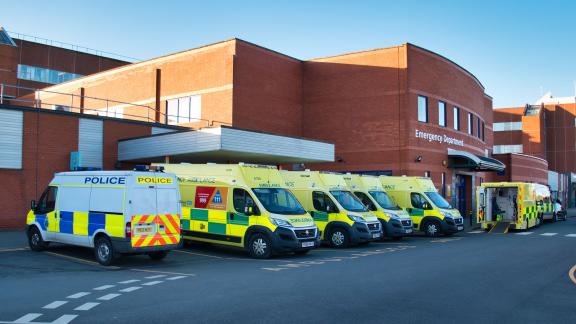Ripping off the sticking plaster: whole-system solutions for urgent and emergency care

Mounting pressures on England’s urgent and emergency care services have been well documented in local and national media over recent months. With headlines of “A&E in crisis” and “emergency services in meltdown” never too far from a front page, the topic has stimulated significant political and public debate. The task ahead for the NHS is to move beyond the headlines and handwringing and find practical whole-system solutions to address current pressures and avert future crises. Failure to find such solutions, and to act on them quickly, could have dire consequences for patients, and for the NHS as a whole.
The NHS Confederation’s Urgent and Emergency Care Forum brings together organisations from across the whole health and care system to debate, develop and share ideas for improving urgent and emergency care. From the work of the forum we know that growing strain on the system is the resultof multiple and complicated factors, often va rying in different parts of the country.
The sheer scale of the challenge means that it cannot be tackled by NHS organisations working in isolation. Solutions hinge on change happening across the system, and leadershipand shared responsibility that unites all parts of the service. Debate and attention has tended to focus on acute hospitals and their emergency departments, as they are often the point where the pressures become most visible. However, we believe that effective responses to these pressures require a whole-system approach that involves all commissioners and providers of hospital, ambulance, primary, community, mental health and social care services working effectively together.
In Emergency care: an accident waiting to happen? the NHS Confederation noted concerns from members that only sticking-plaster solutions were being offered. This follow-up report acts as a roadmap to the fundamental changes required to create a sustainable and high-quality urgent and emergency care system that can meet the needs of patients now and in the future.
While this destination is clear, the publicand politicians will need to recognise that the journey to get there may vary in each area, according to the resources, needs and priorities in different communities. As the NHS Confederation’s 2015 Challenge campaign sets out, we must ensure the health and care system has the freedom and flexib ility it needs to develop solutions that will deliver the best possible outcomes for patients and the public.
The report draws on a review of the literature and evidence commissioned from the University of Sheffield’s School of Health and Related Research (ScHARR), and on the knowledge and experience of our members as shared through a programme of forum events, visits and steering group meetings.
It does not, and should not, claim to presentall of the answers to h ow we address the challenges facing urgent and emergency care – they are to be discovered by local NHS organisations and their partners in local government, the voluntary and independent sectors, working with the communities they serve. Our members are already doing this, and there are many great examples of progress being achieved. A number of these are set out as case studies in the report, along witha series of recommendations to national policymakers and local leaders in three
areas where we believe the need for action is most pressing: establishing emergency care networks; improving access to care; and developing an urgent and emergency care system and workforce that is fit for the future.



